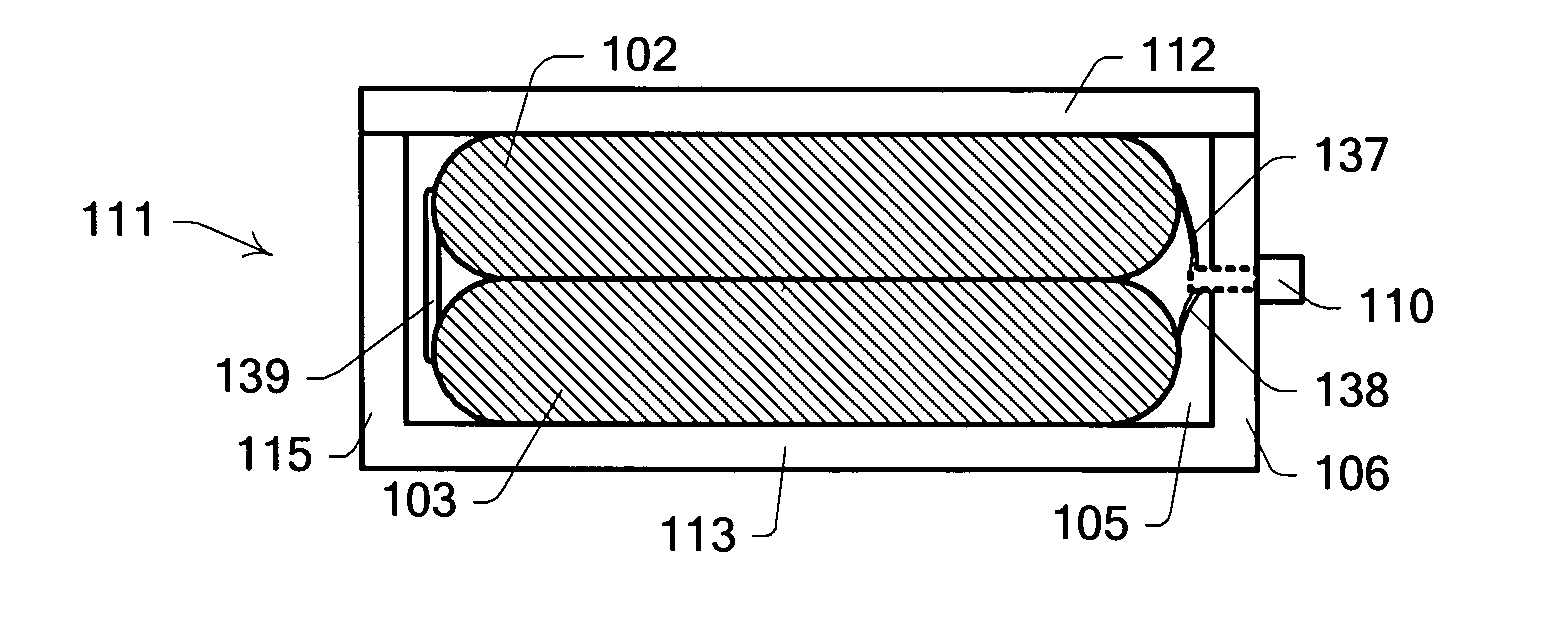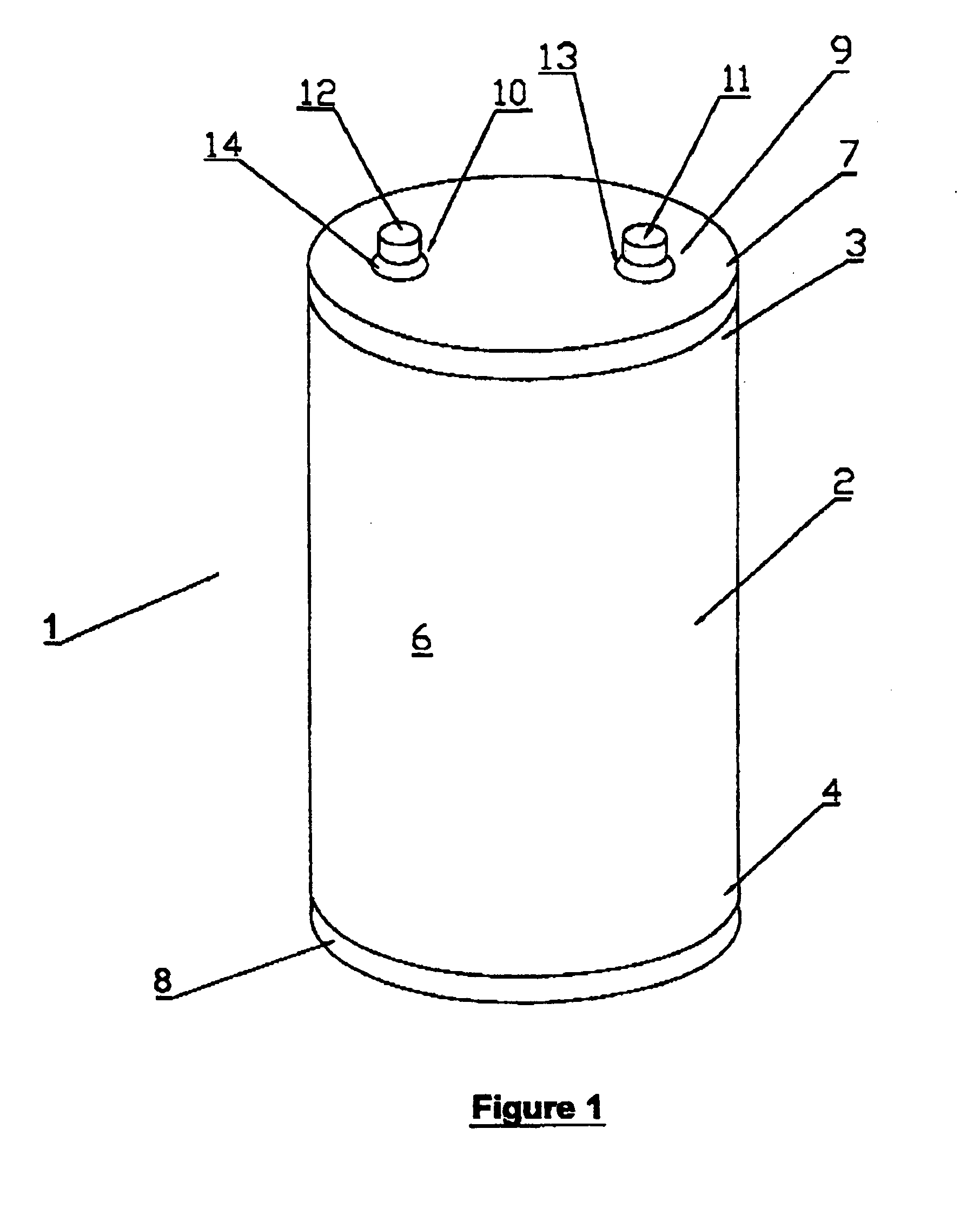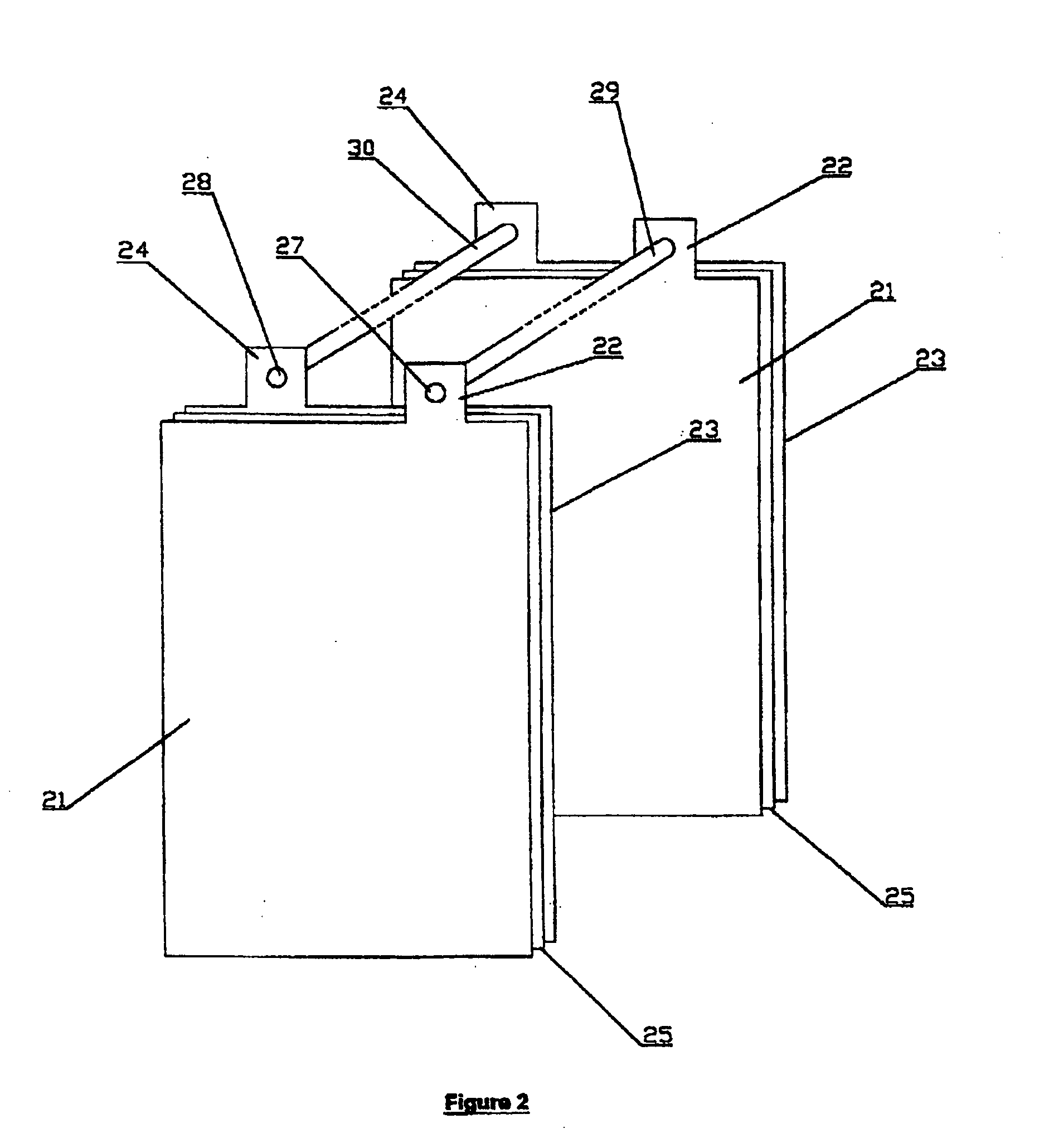Charge Storage Device
a technology of energy storage and charge, which is applied in the direction of hybrid capacitor electrolytes, capacitors, electrical equipment, etc., can solve the problems of large uncertainty in the use of rc time constant as a measure of capacitor suitability, low energy delivered, etc., and achieves a wide range of operating temperature and high thermal shock.
- Summary
- Abstract
- Description
- Claims
- Application Information
AI Technical Summary
Benefits of technology
Problems solved by technology
Method used
Image
Examples
example 1
Forming a Supercapacitor
[0150]Electrode sheets formed from 6 μm thick carbon coatings on 22 μm thick aluminium foil were cut to give 29 cm2 of active area and one separator selected from: a 25 μm thick paper separator; a 35 μm thick nylon separator or; a 37 μm thick polypropylene separator was placed between the electrodes. The whole was then folded in half to form a flat electrode stack with bare aluminium tabs extending. The whole was saturated with either: 1M TEATFB / PC; EMITFB; EMITFSI; Py1,3TFSI; EMITFMS or; EMIDCA electrolyte and sealed into a package formed from a polypropylene and aluminium laminate with an EAA sealant layer. The supercapacitor thus assembled had external dimensions of about 60×55×0.4 mm. This general construction is used a standard for materials comparison. Electrical testing results are given in Table 4 and the effect of temperature is given in Table 5 for a like series of samples.
TABLE 4Electrical properties of cells with ionic liquidsCapacitance atESR at ...
example 2
Forming a Supercapacitor and SMT Testing
[0151]Electrode sheets formed from 6 μm thick carbon coatings on 22 μm thick aluminium foil were layered with a 25 μm thick paper separator to form a flat electrode stack of maximum dimensions about 30×15×1 mm. Aluminium tabs (5 mm wide by 100 μm thick) with pre-coated polypropylene sealant layers were attached to opposing ends of the electrode stack. The whole was saturated with EMITFB electrolyte and sealed within a polypropylene and aluminium laminate package designed for packaging lithium-ion batteries. The supercapacitor thus assembled has external dimensions of about 39×17×1.3 mm and the terminals extend about 1.5 cm. The supercapacitor was then approximately evenly coated with a layer of silicone sealant to give an approximately 50×28×15 mm device with the aluminium tabs extending about 5 mm beyond the silicone. After curing overnight, the supercapacitor was heated from room temperature to about 50° C. over about 8 minutes and then to 2...
example 3
Forming a Supercapacitor and SMT Testing
[0152]Electrode sheets formed from 6 μm thick carbon coatings on 22 μm thick aluminium foil were layered with a 25 μm thick paper separator to form a flat electrode stack of maximum dimensions about 30×15×1 mm. Aluminium tabs (3 mm wide by 100 μm thick and about 10 cm long) with pre-coated polypropylene sealant layers were attached to opposing ends of the electrode stack. The whole was saturated with EMITFSI electrolyte and sealed within a polypropylene and aluminium laminate package designed for packaging lithium-ion batteries. The supercapacitor thus assembled has external dimensions of about 39×17×1.3 mm and the terminals extend approximately 10 cm. This supercapacitor cell was then placed within a housing machined from a 49×22×4 mm block of Teflon with a 45×18×2 mm cavity. The terminals were folded to maximise the thermal pathway through them, extending about 7 mm from the housing. The remaining space within the cavity was then filled with...
PUM
 Login to View More
Login to View More Abstract
Description
Claims
Application Information
 Login to View More
Login to View More - R&D
- Intellectual Property
- Life Sciences
- Materials
- Tech Scout
- Unparalleled Data Quality
- Higher Quality Content
- 60% Fewer Hallucinations
Browse by: Latest US Patents, China's latest patents, Technical Efficacy Thesaurus, Application Domain, Technology Topic, Popular Technical Reports.
© 2025 PatSnap. All rights reserved.Legal|Privacy policy|Modern Slavery Act Transparency Statement|Sitemap|About US| Contact US: help@patsnap.com



